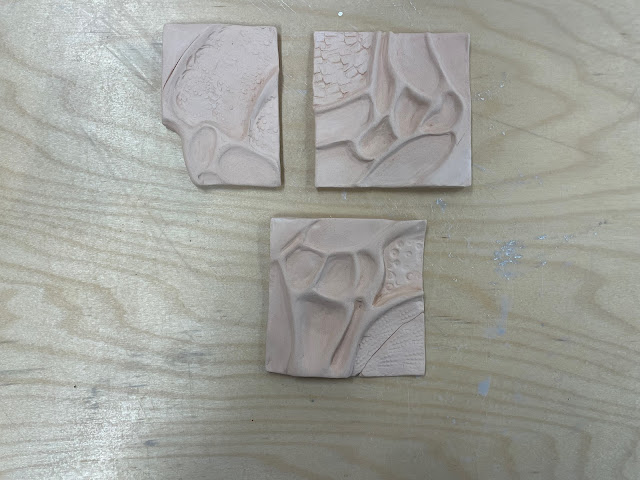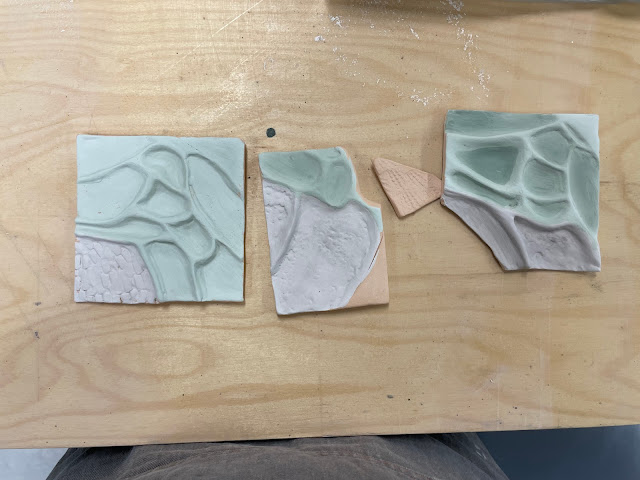Samples after the first baking in a ceramic kiln. The first baking is done to 1000°C. The next step was to choose the color that would be used under the glaze, this is not a necessary step, but it can highlight the color of the glaze, so I decided to check the effects on these samples. I put a colour on them that I mixed myself from ready-made colours available in ceramic workshops. The colours I chose for mixing were midnight blue and white. Through this process, I wanted to obtain a more delicate version of blue, as midnight blue, as the name suggests, is a dark shade of blue. My colour inspiration is impressionism, and I decided to be inspired by Claude Monet's painting "Water Lilies" for this work. The next colour I used was a delicate shade of green (the name!!).
I used a small scale and a plastic box to mix colours. For this project, I mixed exactly 84g of White with 114g of Midnight Blue.
Then, since I had 3 samples available, I decided to check whether layering would affect the colour intensity after baking and glazing. I applied one, two and three layers of each colour as follows and then signed them using a black pen so as not to mix them.
The next stage will be applying the glaze. At this stage, the visible colours do not reflect the final effect. During subsequent baking and glazing, they may be completely transformed. That's why it's so important to make colour samples before applying them to the final product.







No comments:
Post a Comment